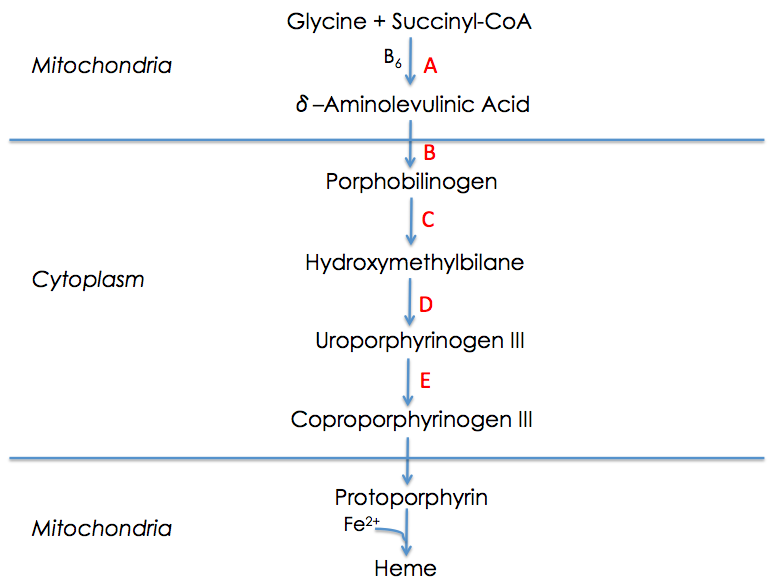WBR0347: Difference between revisions
Jump to navigation
Jump to search
Rim Halaby (talk | contribs) No edit summary |
m (refreshing WBR questions) |
||
| (5 intermediate revisions by 3 users not shown) | |||
| Line 1: | Line 1: | ||
{{WBRQuestion | {{WBRQuestion | ||
|QuestionAuthor={{ | |QuestionAuthor= {{YD}} (Reviewed by {{YD}} and {{AJL}}) | ||
|ExamType=USMLE Step 1 | |ExamType=USMLE Step 1 | ||
|MainCategory=Pathophysiology | |MainCategory=Pathophysiology | ||
| Line 8: | Line 8: | ||
|MainCategory=Pathophysiology | |MainCategory=Pathophysiology | ||
|SubCategory=Hematology | |SubCategory=Hematology | ||
|MainCategory=Pathophysiology | |||
|MainCategory=Pathophysiology | |MainCategory=Pathophysiology | ||
|MainCategory=Pathophysiology | |MainCategory=Pathophysiology | ||
| Line 20: | Line 21: | ||
|MainCategory=Pathophysiology | |MainCategory=Pathophysiology | ||
|SubCategory=Hematology | |SubCategory=Hematology | ||
|Prompt=A 25 year old | |Prompt=A 25-year-old man presents to the physician's office with complaints of blistering vesicles on his face and upper extremities. He reports that he previously had similar episodes in the pasts, all of which occurred following exposure to sunlight. The patient also states that his urine has a reddish brown discoloration under natural light. Based on the simplified diagram of heme synthesis illustrated below, which of the following steps is most likely inhibited in this patient? | ||
[[Image:WBR0344.png|500px]] | [[Image:WBR0344.png|500px]] | ||
|Explanation= | |Explanation=[[Porphyria cutanea tarda]] (PCT) is caused by the deficiency of the enzyme uroporphyrinogen decarboxylase. Patients with PCT typically present with acute skin eruptions of blistering vesicles that are usually located on the face and upper extremities (sun-exposed body areas) but may also be present different parts of the body a few days following sun exposure. Due to increased concentration of uroporphyrinogen in the urine, the urine appears reddish brown under natural light and pinkish under Wood's lamp. Sun avoidance and reduction of iron stores (phlebotomy and chelation) are important measures in the management of patients with PCT. | ||
|AnswerA=A | |AnswerA=A | ||
|AnswerAExp="A" corresponds to ALA synthase | |AnswerAExp="A" corresponds to ALA synthase. ALA synthase activity is deficient in [[B6 deficiency]]. | ||
|AnswerB=B | |AnswerB=B | ||
|AnswerBExp="B" corresponds to ALA dehydratase | |AnswerBExp="B" corresponds to ALA dehydratase. ALA dehydratase activity is deficient in [[lead toxicity]]. | ||
|AnswerC=C | |AnswerC=C | ||
|AnswerCExp="C" corresponds to porphobilinogen deaminase, deficient in acute intermittent porphyria. | |AnswerCExp="C" corresponds to porphobilinogen deaminase, deficient in acute intermittent [[porphyria]]. | ||
|AnswerD=D | |AnswerD=D | ||
|AnswerDExp="D" corresponds to uroporphyrinogen III synthase | |AnswerDExp="D" corresponds to uroporphyrinogen III synthase. Uroporphyrinogen III synthase deficiency is associated with [[Gunther disease]] (congenital erythropoietic porphyria). | ||
|AnswerE=E | |AnswerE=E | ||
|AnswerEExp="E" corresponds to uroporphyrinogen decarboxylase, deficient in porphyria cutanea tarda ( | |AnswerEExp="E" corresponds to uroporphyrinogen decarboxylase, deficient in [[Porphyria cutanea tarda]] (PCT). | ||
|EducationalObjectives=[[Porphyria cutanea tarda]] (PCT) is caused by a deficiency of uroporphyrinogen decarboxylase. | |||
|References=Munoz-Santos C, Guilabert A, Monero N, et al. Familial and sporadic porphyria cutanea tarda: clinical and biochemical features and risk factors in 152 patients. Medicine (Baltimore). 2010;89(2):69-74.<br> | |||
First Aid 2014 page 388 | |||
|RightAnswer=E | |RightAnswer=E | ||
|WBRKeyword= | |WBRKeyword=Porphyria cutanea tarda, PCT, Photosensitivity, Uroporphyrinogen decarboxylase, Urine discoloration, Uroporphyrinogen, Decarboxylase, Blisters, Vesicles, Heme synthesis pathway, Wood's lamp | ||
|Approved= | |Approved=Yes | ||
}} | }} | ||
Latest revision as of 00:15, 28 October 2020
| Author | [[PageAuthor::Yazan Daaboul, M.D. (Reviewed by Yazan Daaboul, M.D. and Alison Leibowitz [1])]] |
|---|---|
| Exam Type | ExamType::USMLE Step 1 |
| Main Category | MainCategory::Pathophysiology |
| Sub Category | SubCategory::Hematology |
| Prompt | [[Prompt::A 25-year-old man presents to the physician's office with complaints of blistering vesicles on his face and upper extremities. He reports that he previously had similar episodes in the pasts, all of which occurred following exposure to sunlight. The patient also states that his urine has a reddish brown discoloration under natural light. Based on the simplified diagram of heme synthesis illustrated below, which of the following steps is most likely inhibited in this patient? |
| Answer A | AnswerA::A |
| Answer A Explanation | [[AnswerAExp::"A" corresponds to ALA synthase. ALA synthase activity is deficient in B6 deficiency.]] |
| Answer B | AnswerB::B |
| Answer B Explanation | [[AnswerBExp::"B" corresponds to ALA dehydratase. ALA dehydratase activity is deficient in lead toxicity.]] |
| Answer C | AnswerC::C |
| Answer C Explanation | [[AnswerCExp::"C" corresponds to porphobilinogen deaminase, deficient in acute intermittent porphyria.]] |
| Answer D | AnswerD::D |
| Answer D Explanation | [[AnswerDExp::"D" corresponds to uroporphyrinogen III synthase. Uroporphyrinogen III synthase deficiency is associated with Gunther disease (congenital erythropoietic porphyria).]] |
| Answer E | AnswerE::E |
| Answer E Explanation | [[AnswerEExp::"E" corresponds to uroporphyrinogen decarboxylase, deficient in Porphyria cutanea tarda (PCT).]] |
| Right Answer | RightAnswer::E |
| Explanation | [[Explanation::Porphyria cutanea tarda (PCT) is caused by the deficiency of the enzyme uroporphyrinogen decarboxylase. Patients with PCT typically present with acute skin eruptions of blistering vesicles that are usually located on the face and upper extremities (sun-exposed body areas) but may also be present different parts of the body a few days following sun exposure. Due to increased concentration of uroporphyrinogen in the urine, the urine appears reddish brown under natural light and pinkish under Wood's lamp. Sun avoidance and reduction of iron stores (phlebotomy and chelation) are important measures in the management of patients with PCT. Educational Objective: Porphyria cutanea tarda (PCT) is caused by a deficiency of uroporphyrinogen decarboxylase. |
| Approved | Approved::Yes |
| Keyword | WBRKeyword::Porphyria cutanea tarda, WBRKeyword::PCT, WBRKeyword::Photosensitivity, WBRKeyword::Uroporphyrinogen decarboxylase, WBRKeyword::Urine discoloration, WBRKeyword::Uroporphyrinogen, WBRKeyword::Decarboxylase, WBRKeyword::Blisters, WBRKeyword::Vesicles, WBRKeyword::Heme synthesis pathway, WBRKeyword::Wood's lamp |
| Linked Question | Linked:: |
| Order in Linked Questions | LinkedOrder:: |
